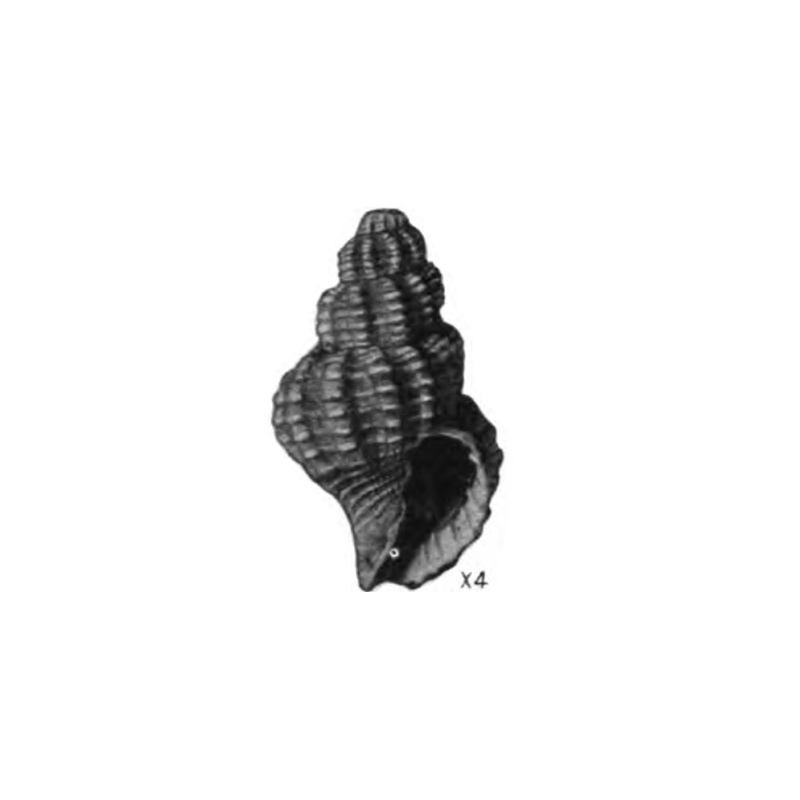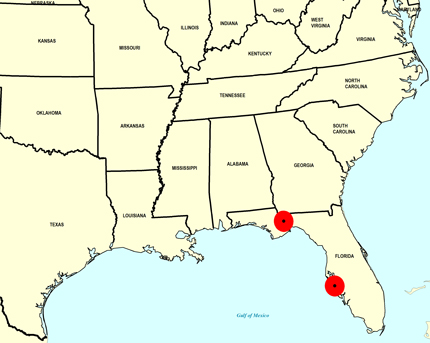
Narona agria

- Phylum: Mollusca
- Class: Gastropoda
- Order: Neogastropoda
- Family: Cancellariidae
- Genus: Narona
- Species: Narona agria (Mansfield, 1930)
Geological Range
Late Pliocene; Extinct.
Paleogeographic Distribution
Southern Florida to northern Florida.
Remarks
Original Description (from Mansfield, 1930, p. 48):
"Shell small, solid, turrited, strongly axially sculptured, with only 3 remaining whorls. Whorls inflated, strongly constricted at the grooved suture. Body whorl much larger than preceding whorl. Axial sculpture (on the body whorl 10) strong, high, rounded, retractive ribs extending on the spire whorls from suture to suture and on the body whorl to the canal and separated by a little wider rounded-bottomed interspaces. Spiral sculpture of strong subrounded threads, or weak cords, and weaker threads occupying the posterior shoulder slope, all neatly overrunning the axials and interspaces with equal strength and separated by interspaces about three times the width of the spirals. On the earliest preserved whorl there are 3 stronger spirals on the periphery and 1 weaker spiral on the posterior slope; on the following whorl 2 weaker spirals occupy the posterior slope; and on the back of the body whorl 2 weaker spirals occupy the posterior slope and 11 stronger spirals extend forward from the posterior shoulder to the siphonal fasciole. Aperture ear-shaped. Outer lip thin, marked within with 5 short lirae, the posterior being farther separated from the second than the others. Canal short, rather wide, weakly gyrate. Parietal wall with reduced re-entering spirals. Columella provided with 2 rounded oblique plications, the anterior one marginating the canal. A small chink lies between the columellar wash and the columella.
Type (U.S.N.M. Cat. No. 370010) measures: Altitude, 11 mm.; (early whorls broken away); diameter 6 mm.; length of aperture, 5.5 mm.
Occurrence: Upper Miocene: Station 1/962, cut in old road leading to Watsons Landing, Liberty County, Fla., type locality; station 3671, Hosford, Liberty County, Fla. Rare at both localities."
To access this description in its original formatting through Google Books, click here.
Stratigraphic Occurrences
- Late Pliocene
- Jackson Bluff Formation (N. FL)
- Tamiami Formation (Pinecrest Beds) (S. FL)


